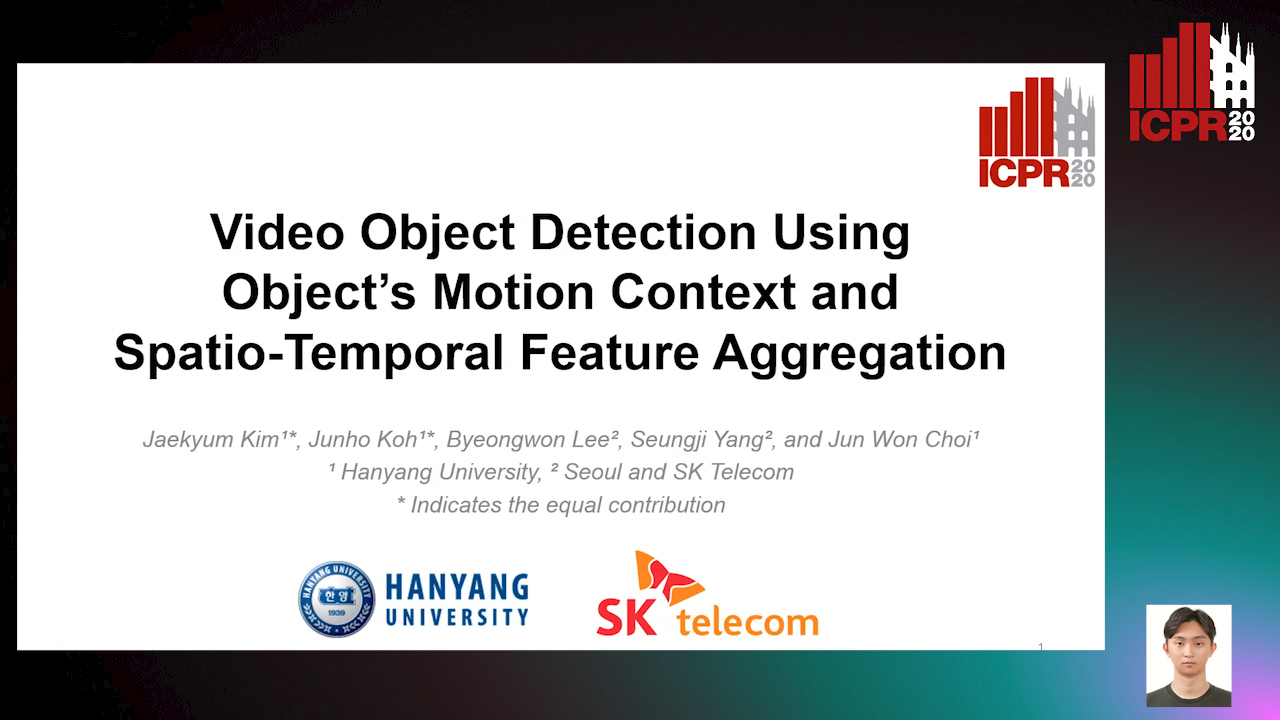Seungji Yang
Paper download is intended for registered attendees only, and is
subjected to the IEEE Copyright Policy. Any other use is strongly forbidden.
Papers from this author
Video Object Detection Using Object's Motion Context and Spatio-Temporal Feature Aggregation
Jaekyum Kim, Junho Koh, Byeongwon Lee, Seungji Yang, Jun Won Choi

Auto-TLDR; Video Object Detection Using Spatio-Temporal Aggregated Features and Gated Attention Network
Abstract Slides Poster Similar
The deep learning technique has recently led to significant improvement in object-detection accuracy. Numerous object detection schemes have been designed to process each frame independently. However, in many applications, object detection is performed using video data, which consists of a sequence of two-dimensional (2D) image frames. Thus, the object detection accuracy can be improved by exploiting the temporal context of the video sequence. In this paper, we propose a novel video object detection method that exploits both the motion context of the object and spatio-temporal aggregated features in the video sequence to enhance the object detection performance. First, the motion of the object is captured by the correlation between the spatial feature maps of two adjacent frames. Then, the embedding vector, representing the motion context, is obtained by feeding the N correlation maps to long short term memory (LSTM). In addition to generating the motion context vector, the spatial feature maps for N adjacent frames are aggregated to boost the quality of the feature map. The gated attention network is employed to selectively combine only highly correlated feature maps based on their relevance. While most video object detectors are applied to two-stage detectors, our proposed method is applicable to one-stage detectors, which tend to be preferred for practical applications owing to reduced computational complexity. Our numerical evaluation conducted on the ImageNet VID dataset shows that our network offers significant performance gain over baseline algorithms, and it outperforms the existing state-of-the-art one-stage video object detection methods.